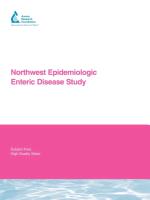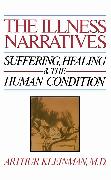Northwest Epidemiologic Enteric Disease Study
BücherAngebote / Angebote:
The primary objective of the study was to estimate the level of infectious gastrointestinal disease attributable to drinking water. The study enrolled three groups of individuals served by different water sources. The approach was to compare rates of enteric illnesses in the three cohorts before changes were made in drinking water treatment at one site with enteric illness rates after the change occurred. A secondary objective was to determine if drinking-water-attributable
endemic levels of gastrointestinal diseases are elevated in a community that uses
unfiltered water from a well-protected surface water source. The approach for this objective was to compare illness rates between the surface water sites and the ground water site before the intervention.
This is an epidemiological study of two populations using unfiltered but chlorinated
surface-derived drinking water and one population using ground water. In the fall of 2000, filtration and ozonation were initiated at one unfiltered surface water source. No changes were made in the sources or water treatment at the other locations. Cohorts of individuals were assembled from each population and illnesses were tracked using daily illness diaries in three cohorts for six months prior to initiation of filtration (Phase 1) and the same six-month time frame the following year after the implementation of filtration (Phase 2). The three sites included: Site A that was affected by the water treatment change in the fall of 2000, Site B that was served by chlorinated, unfiltered surface water for the entire study period, and Site C that
was served by chlorinated and uncontaminated ground water. All sites before and after the treatment changes met the Safe Drinking Water Standards. Sera collected from adults during each phase of the study were analyzed for antibody responses to Cryptosporidia and Giardia by Western blot. Stools collected in Site A during both phases of the study were tested using a polymerase chain reaction (PCR) test for Microsporidia, Cryptosporidium, and Giardia, along with Cryptosporidium IgA antibody by ELISA. Daily illness diaries collected before and after initiation of filtration of the unfiltered drinking water supply were used to estimate the risk of waterborne gastroenteritis. Other information was also collected from Sites A and B to support the study efforts. This information collected during both phases included: 1) emergency department visits, 2) school absences, and 3) water quality data.
Folgt in ca. 15 Arbeitstagen




